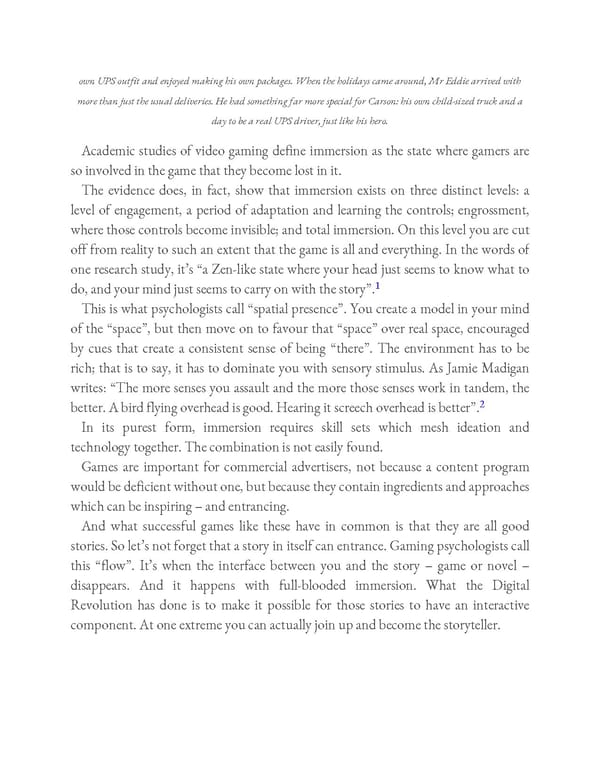own UPS outfit and enjoyed making his own packages. When the holidays came around, Mr Eddie arrived with more than just the usual deliveries. He had something far more special for Carson: his own child-sized truck and a day to be a real UPS driver, just like his hero. Academic studies of video gaming define immersion as the state where gamers are so involved in the game that they become lost in it. The evidence does, in fact, show that immersion exists on three distinct levels: a level of engagement, a period of adaptation and learning the controls; engrossment, where those controls become invisible; and total immersion. On this level you are cut off from reality to such an extent that the game is all and everything. In the words of one research study, it’s “a Zen-like state where your head just seems to know what to 1 do, and your mind just seems to carry on with the story”. This is what psychologists call “spatial presence”. You create a model in your mind of the “space”, but then move on to favour that “space” over real space, encouraged by cues that create a consistent sense of being “there”. The environment has to be rich; that is to say, it has to dominate you with sensory stimulus. As Jamie Madigan writes: “The more senses you assault and the more those senses work in tandem, the 2 better. A bird flying overhead is good. Hearing it screech overhead is better”. In its purest form, immersion requires skill sets which mesh ideation and technology together. The combination is not easily found. Games are important for commercial advertisers, not because a content program would be deficient without one, but because they contain ingredients and approaches which can be inspiring – and entrancing. And what successful games like these have in common is that they are all good stories. So let’s not forget that a story in itself can entrance. Gaming psychologists call this “flow”. It’s when the interface between you and the story – game or novel – disappears. And it happens with full-blooded immersion. What the Digital Revolution has done is to make it possible for those stories to have an interactive component. At one extreme you can actually join up and become the storyteller.
 Ogilvy on Advertising in the Digital Age Page 150 Page 152
Ogilvy on Advertising in the Digital Age Page 150 Page 152